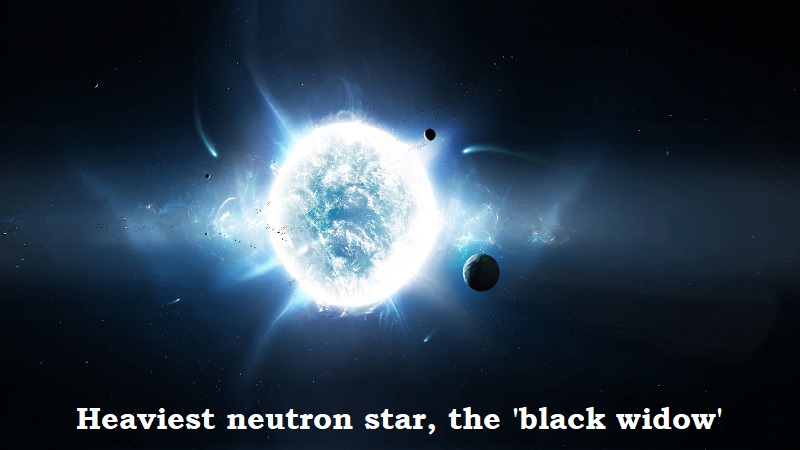
The heaviest known neutron star, which is created when the core of a giant star experiences gravitational collapse at the conclusion of its life, has been found by astronomers for the first time. The star is spinning so quickly that it has almost completely destroyed and absorbed the partner star’s mass, making it the heaviest star ever discovered.
With 1.3 to 2.5 solar masses (the mass of the sun) packed into a sphere around the size of a city and possibly 20 kilometres in diameter, neutron stars are unusual cosmic creations. NASA claims that matter is compressed so tightly that a quantity of stuff the size of a sugar cube would weigh more than 1 billion tonnes, or roughly the same as Mount Everest.
The newly found neutron star has a mass that is approximately 2.35 times that of the sun, and if it gets heavier could collapse and form a black hole. The star has been named black widow as an analogy to the tendency of female black widow spiders to consume the much smaller male after mating.
The neutron star that the researchers describe is a pulsar, a sort of highly magnetised neutron star that emits electromagnetic radiation beams from its poles. These beams pulse as it spins, giving the impression of a rotating lighthouse to an observer on Earth.
Romani, a professor of physics at Stanford’s School of Humanities and Sciences, said that by combining this measurement with those of several other black widows, ‘we prove that neutron stars must reach at least this mass, 2.35 plus or minus 0.17 solar masses
For a very long time, scientists have believed that when a star collapses at the end of its life, one with a core mass more than around 1.4 solar masses creates a dense, compact object with an interior under such high pressure that all atoms are smashed together to form a sea of neutrons and their subnuclear constituents, quarks.
The neutron star, officially known as PSR J0952-0607, is around 20,000 light years away from Earth and is located in our Milky Way galaxy in the direction of the constellation Sextans. This neutron star shares an orbit with another star in a configuration known as a binary system.
It appears to have been born with a neutron star’s typical mass, which is about 1.4 times the mass of the sun. However, due to its gravitational pull, which stole material from its companion star, it was able to grow to a mass that appeared to be at the upper limit before collapsing into a black hole, the densest known object.

Post Your Comments